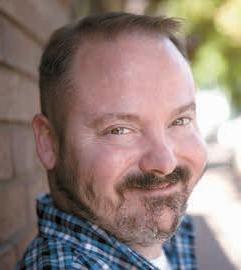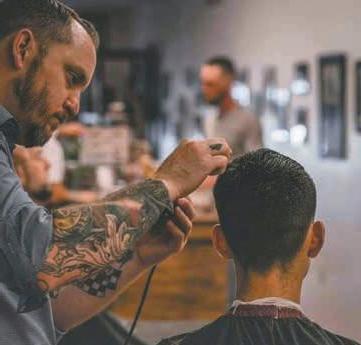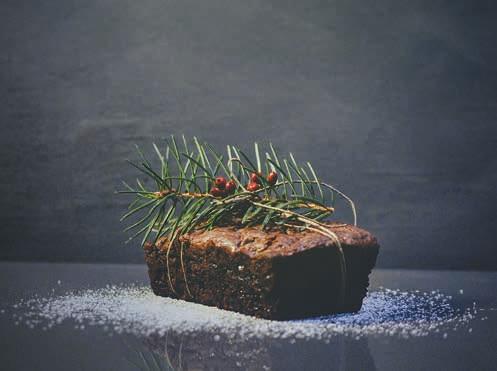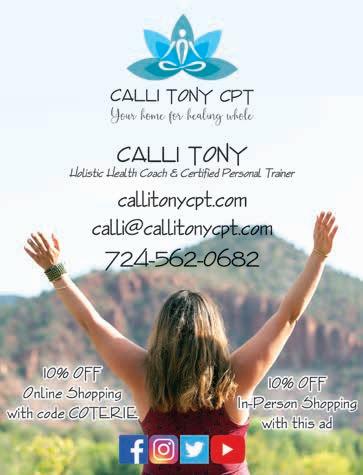
13 minute read
SING TO HEAL
SING TO HEAL Using the Voice to Uplift Mind and Body
by Marlaina Donato
Advertisement
According to growing research, singing along to a favorite musical or joining a local choir can be good for our health. From college students to patients with Parkinson’s disease, everyone can benefi t, regardless of talent. Singing naturally fosters endorphins, amps up immunity levels and lowers the stress hormone cortisol. A study by the UK University of East Anglia published in 2017 in Th e BMJ’s Medical Humanities shows that group singing—along with the positivity of social interaction—supports and improves mental health in people with depression and anxiety. Singing for the Brain, a program created by Th e Alzheimer’s Society, has been shown to improve memory, mood and the ability to socialize for people with dementia.
“I feel singing can be signifi cant to mental well-being and healing from an injury or cancer, while in recovery from substance abuse, or to help cope with trauma. Additional benefi ts may include pain management,” says Tamera Anderson-Hanna, a licensed mental health counselor and the owner of Wellness, Th erapy & Yoga, in Miami.
Breathing into Self-Expression
“When we sing, we dive straight into a conscious bodily experience that brings us into immediate connection with our bodies. Singing, especially repetitive singing where we can start to regulate a breath cycle and elongate it, gets us deeply oxygenated,” says Daisy Press, a professional singer and vocal teacher in New York City.
There’s no right or wrong way to reap the benefits of music. A few years into her professional career, Press took a group lesson with a North Indian raga teacher and experienced a deep inner shift. “I was allowed to enjoy the feeling of singing that one note and my mind turned off. I felt the intonation itself in my body—in waves, shapes and colors. Intonation itself became a real living energy that felt essentially good, restorative and healing.”
Lea Longo, a Montreal-based meditation mindfulness coach and musician, concurs. “Singing has been my way to relax, not only my mind, but my body, as well. It uses the breath, a vital tool for health. It’s my go-to place to feel better. I just sing when I need a boost, and it works for me.”
Resonance, Mantra and Humming
“The voice can be considered a healing tool for the fact that it is directly related to resonance in the body,” explains Longo. “We can think of our voice as a tuning fork to ‘tune’ ourselves and use it as a way to heal internally through the vibrations and sounds we produce.” Using sound is a subtle energy therapy that can help heal emotional or physical distress, he says
Mantra, the recitation of specifi c words or traditionally sacred chants, is not a religion, but simply a method to quell mental chatter. “Mantras are vibrational tools that can be practiced by any faith or spiritual practice.”
In her work, Anderson-Hanna makes the mantra personal. “I oft en teach individuals how to create their own mantra and how to challenge their thinking using positive affi rmations. Th e mantra I teach is most oft en a personal refl ection of ‘I am’ statements they can aspire to, versus negative or defeating thoughts.”
Humming, another way to open the voice for healing, is the least intimidating for many people, but packs a powerful punch. “Out of all the many healing sounds I’ve worked with, I find that humming is the most effective because it is so inclusive—everyone can hum. Physiologically, humming reduces heart rate, respiration and blood pressure. Many different beneficial hormones and chemicals are released, including endorphins, oxytocin, melatonin and nitric oxide,” says Jonathan Goldman, co-author of The Humming Effect and director of the Sound Healers Association, in Boulder, Colorado. “The importance of nitric oxide is coming more into light since it is a vasodilator and has anti-viral qualities.” In addition, humming stimulates the vagus nerve, which reduces inflammation and enhances immunity.
Whether we sing children to sleep at night or learn to sing jazz, using our voices can be good medicine. Goldman reminds us, “Th ere are so many diff erent ways that sound can positively shift and change us.”
Marlaina Donato is a recording artist and author. Connect at AutumnEmbersMusic.com.


A New Story for the World Re-Visioning the Script for a Healthier Society and Planet
by Linda Sechrist
The most familiar form of human activity and the most natural way to describe what happens in our lives is through telling stories. Toddlers listen to stories that have contained the same archetypal characters acting out similar plots for millennia. In literature, folktales and myths all over the world, stories serve the purpose of providing life instructions and answering humanity’s fundamental questions about the nature of existence, such as who we are, where we came from, the definition of our purpose and the nature of our reality.
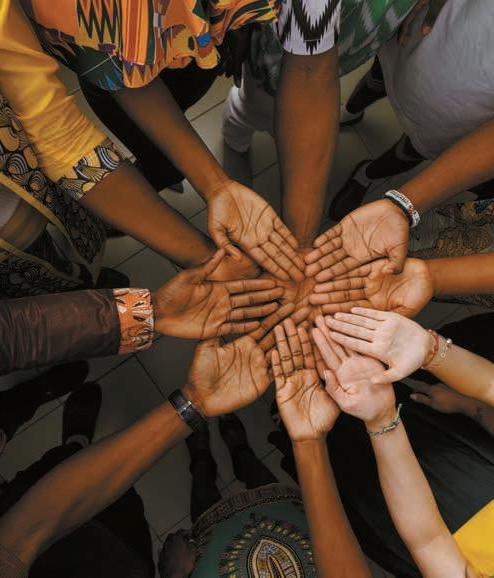
lightscience/AdobeStock.com
In the 1980s, author and cultural historian Thomas Berry declared that humanity needed a new story that is less destructive and dysfunctional. Berry filled lecture halls, telling attendees, “We are in trouble now because we don’t have a good story. The old story, the account of how the world came to be and how we fit into it, isn’t functioning properly. What once sustained us, shaped our emotional attitude, provided us with life purpose, energized action, consecrated suffering, integrated knowledge and guided education is no longer serving humanity.” As we are discovering globally through hard experience, the old stories of rugged individualism and conquering and dominating the natural world have run their course with grim results.
In the last four decades, fragments of a new story have been slowly emerging. Because it isn’t deemed worthy of mainstream media, the public is left in the dark about new, life-instructing stories capable of altering human civilization in positive ways. Were these story fragments woven together in an anthology, chapters on climate, economy, religion, environment, science, politics, medicine, education, conscious evolution and community would constitute a useful account of ideas and concepts capable of bringing about a brighter future for humanity and the planet. These possibilities would surely capture readers’ imaginations.
New Climate Story
In Climate: A New Story, writer and activist Charles Eisenstein suggests that we need a new story that makes possible the
more beautiful world our hearts know is achievable. The story, which he believes is attainable, calls for people, governments and organizations to embrace a partnership paradigm to protect, restore, regenerate and repair damages to our planet’s natural world, which we call the environment. Using indigenous wisdom, organizations such as the Pachamama Alliance and Bioneers are helping individuals worldwide to recognize that humanity is here to be in service to life. Creating the right conditions for revitalizing life is the opposite of our collective story that views the natural world only as a resource.
Eisenstein’s ideas for regenerative agriculture match those described in environmentalist Paul Hawken’s Drawdown: The Most Comprehensive Plan Ever Proposed to Reverse Global Warming. In October, Drawdown Georgia became the first state-centered effort to crowd-solve for climate change, with solutions tailored to Georgia’s unique natural, economic and social resources.
New Science Story
Evolution biologist Elisabet Sahtouris’ stories about science shine a light on the broader perspective of life and science gained from studying multiple worldviews. A scholar of ancient sciences, Sahtouris reminds us that the original purpose of science was to find guidance for human affairs by studying nature. During a recent conversation with Ubiquity University founder Jim Garrison in the online Humanity Rising’s Global Solutions Summit, she says, “We have acted in opposition and made ecology subservient to our economy, using ecology as a set of resources for human economics. When we make our economy fit into nature’s economy, which we call ecology, we’ll have ecosophy, the ‘wisdom of the Earth itself’ that occurs when a man knows how to listen with love.”
Sahtouris teaches corporations about ecosophy’s new view of a conscious universe and a living Earth in which we are co-creators. This, she believes, takes humans out of fatalistic victimhood so that we can become consciously active agents of our destiny. Lifting the fog of our self-image as consumers of stuff gives humans the rights and responsibilities to live out our full co-creative humanity.

A Global Commons Sharing Solutions
Through the daily sharing of stories with keynote speakers and panel discussions, Garrison increases the momentum of the Humanity Rising movement, which includes Ubiquity University students, program participants and more than 400 organizations that come together as a “global commons” to take counsel and share what they are developing for their own networks.
Humanity Rising was launched to try to leverage the crisis of the coronavirus pandemic into an opportunity for human renewal and increase our resilience to future challenges. This new form of real-life competency education delivered in TED Talk-style presentations, moderated dialogues, working groups, blogs, ongoing conversations, group discussions and other interactions provides participants a wide scope of possibilities and activities for working together for global solutions.
Economics Story
If British economist Kate Raworth writes a follow-up to her bestselling book Donut Economics: Seven Ways to Think Like a 21st Century Economist, she’ll certainly add a case study of her consulting work in Amsterdam, where her donut model is now embraced as the starting point for public policy decisions. Amsterdam is the world’s first city to make a commitment to Raworth’s concepts: “Out with the global attachment to economic growth and laws of supply and demand, and in with … what it means for countries, cities and people to thrive in balance with the planet,” as reported in The Guardian. The simple central premise of Raworth’s alternative to growth economics is that the goal of economic activity should be to meet the core needs of all within the means of the planet.
Interconnectedness
Author Robert Atkinson’s contribution to the new story is his understanding of the underlying unity in all religions and all humanity, expressed throughout his book The
Story of Our Time: From Duality to Interconnectedness to Oneness. “Nature is an embodiment of the divine, and the whole Earth is sacred. Its vast resources are our common heritage entrusted to us,” he says. “Humanity is one family. Having passed through the stage of childhood, humanity is now struggling to leave behind its adolescent ways while taking on new patterns of thought and action in approaching its maturity. Accepting the oneness of humanity as a biological fact, a social necessity and a spiritual reality will lead us further along our journey toward lasting peace.”
Atkinson believes global harmony is inevitable when we exercise our obligation to independently investigate reality and stop blindly and uncritically following various traditions, movements and opinions. He says, “I consider this as one of the main sources of world conflict.”
Undivided Wholeness
In a world engulfed by fragmentation, the film Infinite Potential: The Life & Ideas of David Bohm is a healing balm with the potential to overturn our ideas about the world and ourselves. “The core work of David Bohm, considered one of the most significant theoretical physicists of the 20th century, is our essential interconnectedness and undivided wholeness from which we get a sense of our own interconnectivity,” says producer and director Paul Howard. “This realization makes it logical to start taking better care of ourselves, each other and planet Earth.”

hugo/AdobeStock.com
Howard notes, “David was interested in the nature of thought and consciousness. Realizing that he wanted to develop full expression of his interests, he explored wider domains and investigated different worldviews with sages, philosophers and spiritual leaders such as the Dalai Lama, who called David his ‘science guru’. A lifelong concern with social and political change led him to develop the Bohm Dialogue, a form of communication aiming to break through our collective modes of habitual thought. He also spent time with indigenous people, searching for a new form of language in which to express his ideas in a more process-oriented way.”
Indigenous Wisdom
While the early church developed and grew in numbers by assimilating the wisdom of the world about it, including paganism, it neglected to assimilate the intuitive ways in that indigenous people knew the natural world, how it functioned and how intimately they were integrated with it.
Tribes around the globe have ancient extinction stories that foretold the crises we are collectively experiencing, as well as potential outcomes and possible solutions. In Sacred Instructions: Indigenous Wisdom for Living Spirit-Based Change, Sherri Mitchell (Weh’na Ha’mu Kwasset) tells the story of the Mohawk Seventh Generation Prophecy. “The Onkwehonwe, or real people, rise up and demand their wisdom and way of life be respected and that the natural way of the Earth and way of life be fully restored. Teachings on the indigenous way of life are being sought after, and all that remains is that we work together to restore the Earth to a state of balance and good health,” she says.
Medicine and Community
Thousands of people are gathering in online intentional communities associated with personal growth, healing and spiritual awakening. Jennifer Phelps, M.D., owner and director of Phelps MD Integrative Medicine, in Redding, Connecticut, practices mind-body medicine and is a faculty member of the Center for Mind-Body Medicine, in Washington, D.C. A trained facilitator of small groups, she has been teaching trauma and stress healing via Zoom calls during the pandemic.
Initially, Phelps was concerned about how the levels of intimacy, trust and vulnerability necessary for individuals to develop a sense of cohesiveness and bonding could be formed via computer screens. By using the center’s model of self-care, selfawareness and mutual support that has its roots in indigenous culture, she felt her concern dissipate as group members began to bond quickly. “Our guidelines call for no cross-talking and no interrupting. Confidentiality is sacred. I’m a facilitator and a participant, which most models don’t allow,” says Phelps. She speculates that the success of online bonding might be due to participants feeling safer in their homes with a little extra anonymity, noting, “Not being face-to-face seems to allow people to share more freely. These weird times are creating a commonality and a sense of community connection.”
handcrafted cruelty-free small batch
Handcrafted in South Western PA
Enjoy our nATurAL AromAs of ThE hoLidAys!

Save 15% Online!
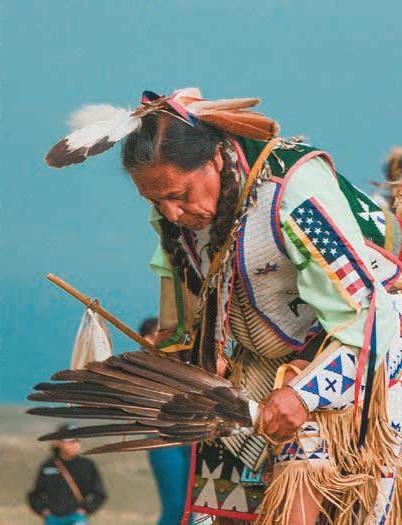
Now through 12/31/20
Coupon Code: NASWPA1220 NASWPA1220

Conscious Choice
Leah Lamb, a sacred storyteller in Topanga, California, defi nes her role as a seer far beyond the present moment. In Lamb’s online classes with her storytelling community, she loves sharing quotes by other storytellers such as Rebecca Solnit, “We think we tell stories; but stories oft en tell us … Too oft en stories saddle us, and they ride us and whip us onward and tell us what to do and we do it without questioning. Th e task of learning to be free is to learn to hear them; to question them, to pause and hear silence, to name them and then become a storyteller of your own story.”
“In our role of storyteller, we can’t be without understanding that we tell stories about how we are in the world as much as stories tell us how to be in world. Identify and notice your stories, then understand how they are running you, so you can consciously choose your place in them,” advises Lamb, who encourages her students to discover the genius of their own calling.
Th ese are only some chapters in the new story that calls for each of us to be aware of the stories we live by, as well as those we tell ourselves and others. It also begs us to ask what is our role in the new story.
Linda Sechrist is a senior staff writer for Natural Awakenings. Connect at LindaSechrist.com.

BasicEarthEssentials.com • 724.426.4579
GROW Your Business Contact us for special ad rates. 724-271-8877


